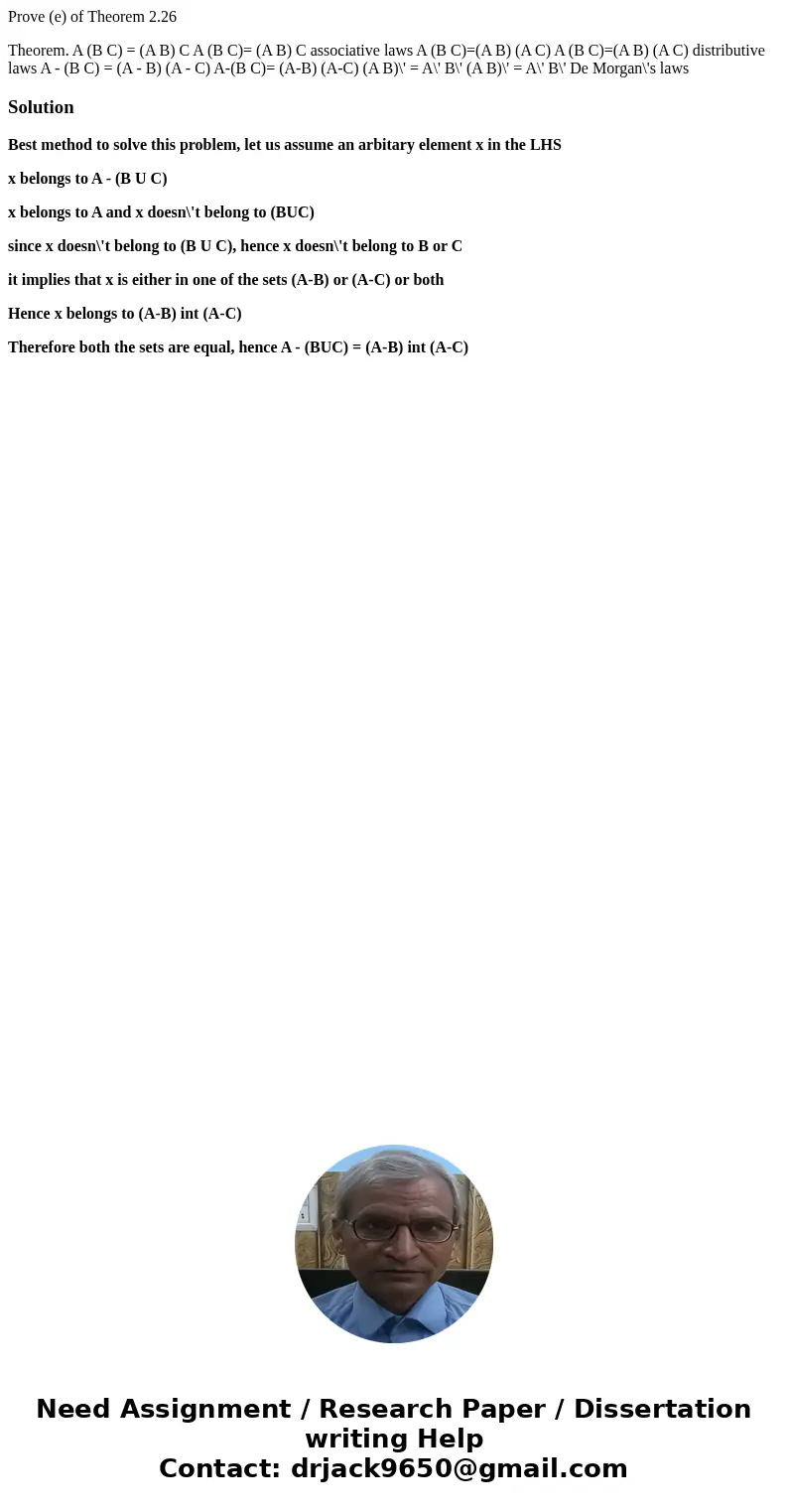Prove e of Theorem 226 Theorem A B C A B C A B C A B C asso
Prove (e) of Theorem 2.26
Theorem. A (B C) = (A B) C A (B C)= (A B) C associative laws A (B C)=(A B) (A C) A (B C)=(A B) (A C) distributive laws A - (B C) = (A - B) (A - C) A-(B C)= (A-B) (A-C) (A B)\' = A\' B\' (A B)\' = A\' B\' De Morgan\'s lawsSolution
Best method to solve this problem, let us assume an arbitary element x in the LHS
x belongs to A - (B U C)
x belongs to A and x doesn\'t belong to (BUC)
since x doesn\'t belong to (B U C), hence x doesn\'t belong to B or C
it implies that x is either in one of the sets (A-B) or (A-C) or both
Hence x belongs to (A-B) int (A-C)
Therefore both the sets are equal, hence A - (BUC) = (A-B) int (A-C)

 Homework Sourse
Homework Sourse